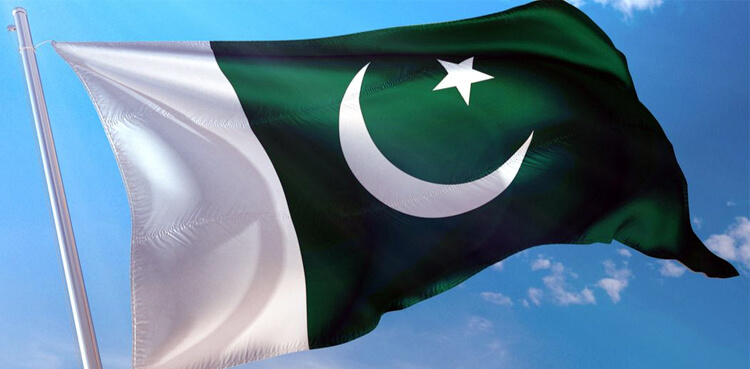The government of Pakistan has launched the latest Economic Survey for 2020.
Growth and Investment Although, provisional GDP growth rate for FY2020 is estimated at negative 0.38 percent, however, macroeconomic stabilization measures undertaken by the government over the past year resulted in a significant reduction in Saving-Investment Gap which was mainly driven by a reduction in the trade deficit and increase in workers’ remittances.
It is also mentionable that fiscal deficit remained contained in the first three-quarters of FY2020. Historically, Private Consumption had significantly contributed to Pakistan’s economic growth. The pattern was likely to continue, however, due to COVID-19, private consumption suffered significantly. In the percentage of GDP, it dropped to 78.5 percent in FY2020 compared to 82.9 percent in FY2019.
The economy of Pakistan like other economies has a diverse structure with three main sectors -agriculture, industry, and services. The agriculture sector, as mentioned earlier, grew by 2.67 percent. The crops sector has witnessed positive growth of 2.98 percent during FY2020 mainly due to positive growth of 2.90 percent in important crops.
According to the Pakistan Bureau of Statistics, the fourth quarter has been estimated by keeping in view the lockdown situation faced by the industrial sector due to COVID-19. A significant impact has been observed in the manufacturing sector, particularly Large-Scale manufacturing and Small-Scale Manufacturing.
The provisional growth in the industrial sector has been estimated at -2.64 percent mainly due to a negative growth of 8.82 percent in the mining and quarrying sector and a decline of 7.78 percent in the large-scale manufacturing sector.
Manufacturing
The Large-Scale Manufacturing (LSM) declined by 5.4 percent during July-March FY2020 as compared to 2.34 percent decline during the same period last year. There are a number of factors that contributed to the negative growth of LSM.
Pak rupee depreciated by 3.9 percent during July-March FY2020 which increased the cost structure of industries in general and for those relying on imported raw materials in particular.
An upward adjustment in electricity prices dented domestic steel producers’ margins. The Mining and Quarrying sector showed a negative growth of 8.82 percent during FY2020 as against 3.19 percent decline last year.
Fiscal Development
IT & Telecom
Inflation
REER
Remittances and Current Account Deficit
Foreign Exchange reserves
Debt
Public Debt Pakistan’s strategy to reduce its debt burden to a sustainable level includes a commitment to run primary surpluses, maintain low and stable inflation, promote measures that support higher long-term economic growth and follow an exchange rate regime based on economic fundamentals.
Total public debt was recorded at Rs 35,207 billion at end-March 2020 compared with Rs 32,708 billion at the end of June 2019, registering an increase of Rs 2,499 billion during the first nine months of the current fiscal year while Federal Government borrowing for the financing of its deficit was Rs 2,080 billion.
This differential is mainly attributable to the depreciation of Pak Rupee, an increase in cash balances of the Federal Government and the difference between face value (which is used for the recording of debt) and the realized value (which is recorded as a budgetary receipt) of PIBs issued during the period. The public debt portfolio witnessed various positive developments during the ongoing fiscal year.
Most of the net domestic debt raised was through medium-to-long-term government securities (Pakistan Investment Bonds) and National Saving Schemes. The cost of borrowing through long term government bonds declined. No new borrowing was made from SBP during the ongoing fiscal year.
To diversify investor base in government securities and capitalize liquidity available with Islamic Financial Institutions, the government has started issuance of 5-Year Floating Rate Sukuk. All of the net external debt raised during the first nine months of the current fiscal year was from multilateral and bilateral sources on concessional terms. The domestic debt was recorded at Rs 22,478 billion at the end of March 2020.
Domestic borrowing operations remained quite successful during the ongoing fiscal year despite challenging macroeconomic situations. External public debt stock reached US$ 76.5 billion (Rs 12,729 billion), witnessing an increase of US$ 3.0 billion during the first nine months of the current fiscal year. Interest expense is expected to remain significantly less than the budgeted amount in 2019-20 owing to the re-profiling of short-term debt into long-term debt and a sharp decline in the cost of borrowing in longer tenor.
- Better cash flow management through a treasury single account;
- Lengthening of maturities in the domestic market keeping in view cost and risks trade-off;
- Developing regular Islamic based lending program
- Availing maximum available concessional external financing from bilateral and multilateral development partners to benefit from concessional terms and conditions.
COVID-19 pandemic
The way forward The Coronavirus outbreak is a human tragedy, affecting hundreds of thousands of people globally. It is also having a growing adverse impact on the global economy including Pakistan.
Global value chains have been disrupted. Stock and commodity prices are falling around the world. Long term bond yields are heading south in fear of global recession.


























Leave a Reply